
|

|

Throughout his career, Zoot Sims was famous for epitomizing the swinging musician, never playing an inappropriate phrase.
He always sounded inspired, and although his style did not change much after the early 1950s, Zoot's enthusiasm and creativity
never wavered.
Zoot's family was involved in vaudeville, and he played drums and clarinet as a youth. His older brother
Ray Sims developed into a fine trombonist who sounded like Bill Harris. At age 13, Sims switched permanently to the tenor,
and his initial inspiration was Lester Young, although he soon developed his own cool-toned sound. Sims was a professional
by the age of 15, landing his first important job with Bobby Sherwood's Orchestra, and joined Benny Goodman's big band for
the first time in 1943; he would be one of BG's favorite tenormen for the next 30 years. He recorded with Joe Bushkin in 1944,
and even at that early stage, his style was largely set.
After a period in the Army, Sims was with Goodman from
1946-47. He gained his initial fame as one of Woody Herman's "Four Brothers" during his time with the Second Herd
(1947-49). Zoot had brief stints with Buddy Rich's short-lived big band, Artie Shaw, Goodman (1950), Chubby Jackson and Elliot
Lawrence. He toured and recorded with Stan Kenton (1953) and Gerry Mulligan (1954-56). Sims was also a star soloist with Mulligan's
Concert Jazz Band of the early 1960s and visited the Soviet Union with Benny Goodman in 1962. A freelancer throughout most
of his career, Sims often led his own combos or co-led bands with his friend Al Cohn; the two tenors had very similar sounds
and styles. Zoot started doubling on soprano quite effectively in the 1970s. Through the years, he appeared in countless situations,
and always seemed to come out ahead. Fortunately, Zoot Sims recorded frequently, leading sessions for Prestige, Metronome,
Vogue, Dawn, Storyville, Argo, ABC-Paramount, Riverside, United Artists, Pacific Jazz, Bethlehem, Colpix, Impulse, Groove
Merchant, Famous Door, Choice, Sonet, and a wonderful series for Pablo.
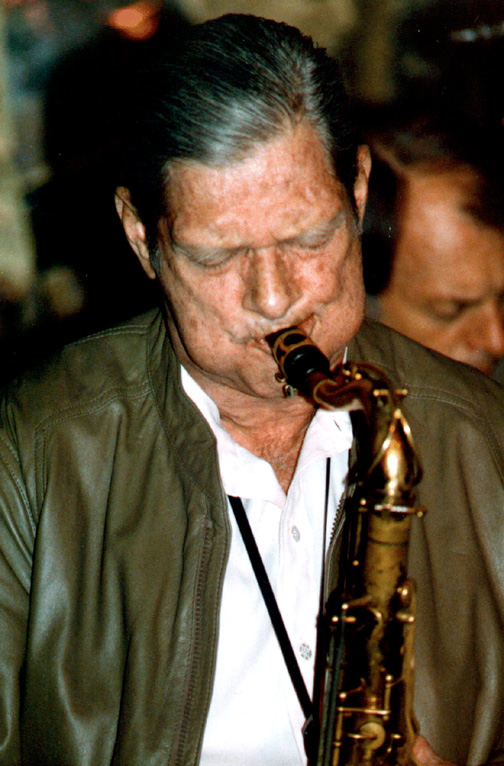
One of the more elegant, tasteful and senstive guitarists, Gene Bertoncini has perfected the art of playing soft, sentimental
music and presenting it in a light, fluid fashion, yet retaining a degree of feeling and spontaneity. He began on guitar at
nine, and was a professional at 16, playing on a children's television show. Bertoncini took architechture at Notre Dame rather
than music, though he later returned to full-time playing. He played with a group led by Buddy Rich that also included Mike
Mainieri and Sam Most. Bertoncini worked with Clark Terry, Paul Winter, Nancy Wilson and in the television orchestras of Merv
Griffin and Skitch Henderson in the '60s. He also backed Tony Bennett and worked with the Metropolitan Opera House orchestra.
During the '70s, Bertoncini played with Wayne Shorter and Charles McPherson, then formed a duo with Mike Moore. They've played
and recorded together over parts of two decades, with Bertoncini selecting the material and writing arrangments. Their performances
blend classical, light (not "lite") jazz, Latin and popular material. Bertoncini and Moore were joined by Michael
Urbaniak in a trio date in 1981, and he's also led workshops and taught at the Eastman School. Bertoncini has recorded for
Stash, Chiaroscuro and Omisound. He and Moore have several releases available on CD.
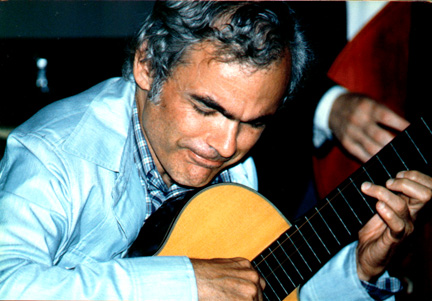
John Blair
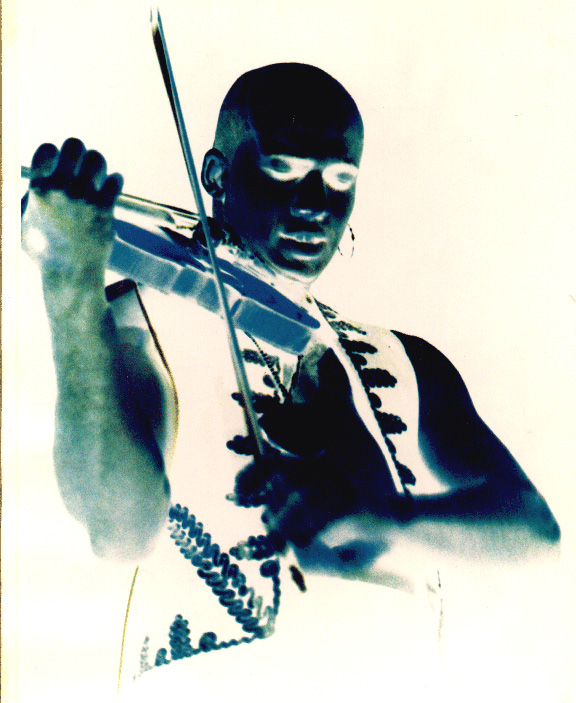
Bill Crow
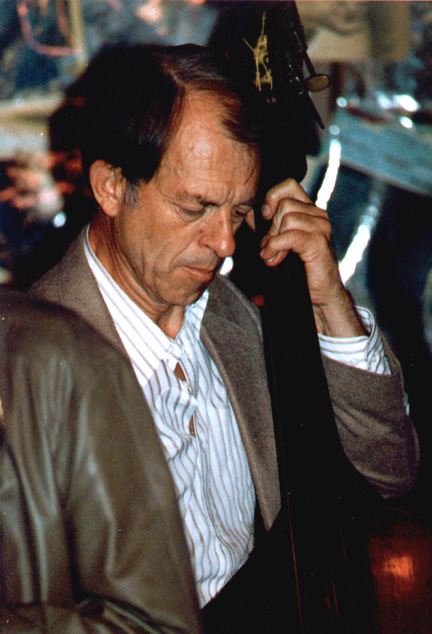
Singer, pianist Bobby Cole
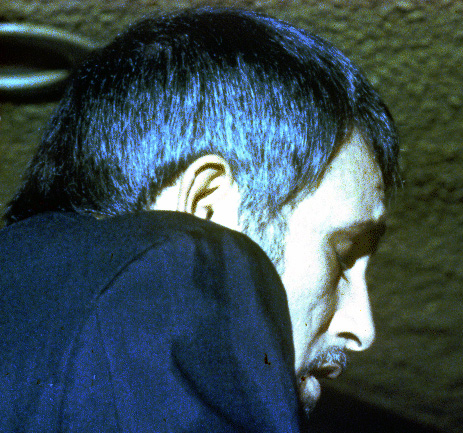
A jazz pianist noted for his versatility and elegance, Derek Smith was born August 17, 1931 in London, England. After taking
up the piano in early childhood, he began his professional career at the age of just 14, and by the early 1950s was a staple
on the U.K. jazz scene, regularly performing with the likes of Kenny Graham, John Dankworth and Kenny Baker. In the mid-1950s
Smith relocated to New York City, where he became a session musician in much demand by studio orchestras and other recording
units; he also continued pursuing his jazz aspirations in the company of Benny Goodman and Connie Kay. Smith continued moving
back and forth from studio work to live jazz dates for years to come, and at the end of the 1960s added to his workload piano
duties in Doc Severinsen's Tonight Show orchestra. In the 1970s he reunited frequently with Goodman, and in 1978 finally led
his own recording date, Love for Sale. The Man I Love followed later that same year, and in the decades to come, Smith's presence
on the jazz landscape increased considerably in addition to solo performances, he also regularly played in a trio with Milt
Hinton and Bobby Rosengarden.

Though a musical arch-conservative, Michael Moore's an impressive, capable bassist noted for his restraint and support in
small group settings. He has few peers for tasteful, lyrical playing, and has constantly drawn raves for his work in New York
clubs. Moore began playing bass at 15, and worked with his guitarist father in Cinncinnati clubs. He studied at the Cincinnati
College Conservatory and played at the local Playboy club with Cal Collins and Woody Evans. Moore toured Africa and Eastern
Europe on a State Department-sponsored junket with Woody Herman's band in 1966, and recorded with Herman in New York and Dusko
Goykovich in Belgrade. Moore played with Marian McPartland, Freddie Hubbard, Jim Hall and Benny Goodman in the '70s, as well
as quartets led by the duos of Ruby Braff and George Barnes, and Chet Baker and Lee Konitz. Moore teamed with Gene Bertonicini
in the late '70s, and continued their association through the '80s into the '90s. He also recorded with Jake Hanna, Warren
Vache, Herb Ellis and Zoot Sims in the '70s, and Kenny Barron, Michael Urbaniak and Sims in the '80s. Moore and Bertoncini
have recorded for OmniSound, Stash and Chiaroscuro. They have a few sessions available on CD.
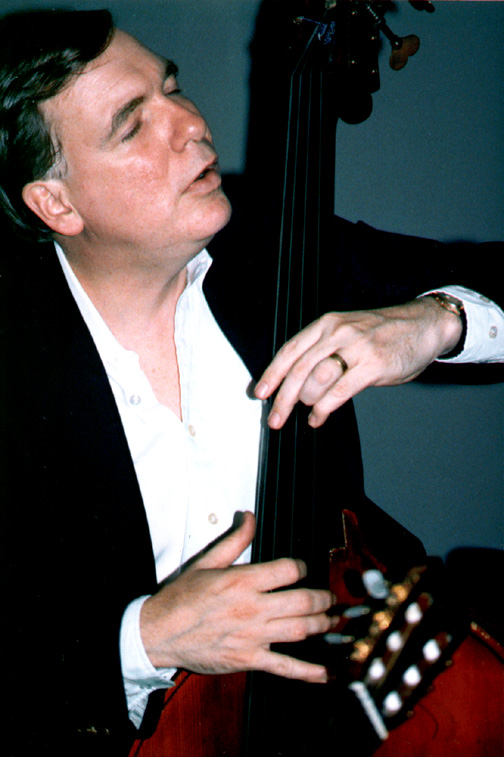
One of the true masters of the bop vocabulary, Phil Woods has had his own sound since the mid-1950s and stuck to his musical
guns throughout a remarkably productive career. There has never been a doubt that he is one of the top alto saxophonists alive,
and he has lost neither his enthusiasm nor his creativity through the years.
Woods' first alto was left to him by an
uncle, and he started playing seriously when he was 12. He gigged and studied locally until 1948, when he moved to New York.
Woods studied with Lennie Tristano, at the Manhattan School of Music, and at Juilliard, where he majored in clarinet. He worked
with Charlie Barnet (1954), Jimmy Raney (1955), George Wallington, the Dizzy Gillespie Orchestra, Buddy Rich (1958-59), Quincy
Jones (1959-61) and Benny Goodman (for BG's famous 1962 tour of the Soviet Union), but has mostly headed his own groups since
1955, including co-leadership of a combo with fellow altoist Gene Quill in the '50s logically known as "Phil & Quill."
Woods, who married the late Charlie Parker's former wife Chan in the 1950s (and became the stepfather to singer Kim Parker),
was sometimes thought of as "the new Bird" due to his brilliance in bop settings, but he never really sounded like
a copy of Parker.
Phil Woods popped up in a variety of settings in the 1960s on Benny Carter's classic Further
Definitions record, touring Europe with the short-lived Thelonious Monk Nonet, and appearing on studio dates like the soundtracks
to The Hustler and Blow Up. Always interested in jazz education (although he believes that there is no better way to learn
jazz than to gig and travel constantly), Woods taught at an arts camp in Pennsylvania in the summers of 1964-67. Discouraged
with the jazz scene in the U.S., he moved to France in 1968. For the next few years, Woods led a very advanced group, The
European Rhythm Machine, which leaned towards the avant-garde and included pianist George Gruntz. Their recordings still sound
fresh and exciting today, although this venture would only be a detour in Woods' bebop life. In 1972, he returned to the U.S.
and tried unsuccessfully to lead an electronic group that featured keyboardist Pete Robinson.
In 1973, Woods formed
a quintet with pianist Mike Melillo, bassist Steve Gilmore, drummer Bill Goodwin and guitarist Harry Leahey that had much
greater success. Their recording Live at the Showboat officially launched the band which today, after a few personnel changes,
still tours the world. After Leahey left in 1978, it was known as the Phil Woods Quartet until trumpeter Tom Harrell (1983-89)
joined; his spot has since been assumed by trombonist Hal Crook (1989-92) and trumpeter Brian Lynch. Pianist Melillo went
out on his own in 1980, and his successors have been Hal Galper (1980-90), Jim McNeely (1990-95) and Bill Charlap; Gilmore
and Goodwin have been with Woods since the group's start. Not just a bebop reportory band, Woods' ensembles have developed
their own repertoire, taken plenty of chances, and stretched themselves while sticking to his straight-ahead path.
Woods
contributed the famous alto solo to Billy Joel's hit recording of "Just the Way You Are" and has been one of Michel
Legrand's favorite artists, guesting with Legrand on an occasional basis; he has made dozens of rewarding recordings himself
through the years. He debuted as a leader in 1954 and has since recorded for Prestige, Savoy, RCA, Mode, Epic, Candid (the
brilliant The Right of Swing in 1961), Impulse, MGM, Verve, Embryo, Testament, Muse, Omnisound, Enja, Chesky and with his
Quintet/Quartet for RCA, Gryphon, Adelphi, Clean Cuts, SeaBreeze (two sets adding Chris Swansen's inventive synthesizer to
the band), Red, Antilles, Palo Alto, BlackHawk, Denon and quite extensively for Concord. An Italian label, Philogy (which
has some broadcasts and live performances from Woods' bands), is named after the popular and still brilliant altoist.
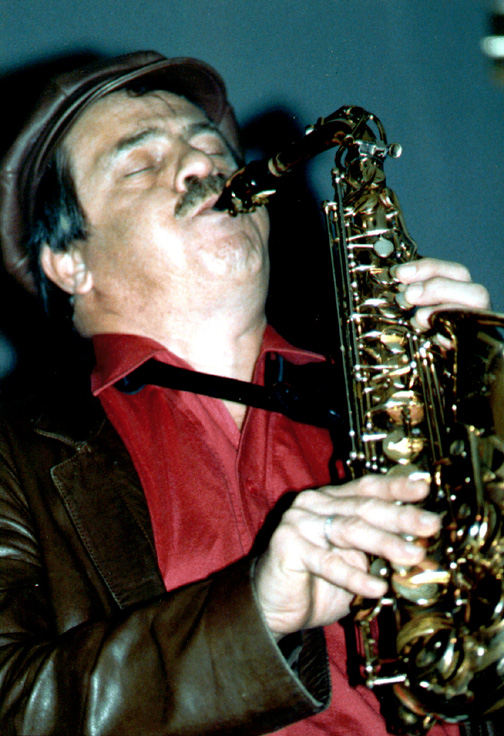
Nearly as famous for his reluctance to play as for his outstanding abilities, guitarist Tal Farlow did not take up the instrument
until he was already 21 but within a year was playing professionally and in 1948 was with Marjorie Hyams's band. While with
the Red Norvo Trio (which originally included Charles Mingus) from 1949-53, Farlow became famous in the jazz world. His huge
hands and ability to play rapid yet light lines made him one of the top guitarists of the era. After six months with Artie
Shaw's Gramercy Five in 1953, Farlow put together his own group which for a time included pianist Eddie Costa. Late in 1958
Farlow settled on the East Coast, became a sign painter and just played locally. He only made one record as a leader during
1960-75 but emerged a bit more often during 1976-84, recording for Concord fairly regularly before largely disappearing again.
Profiled in the definitive documentary Talmage Farlow, the guitarist can be heard on his own records for Blue Note (1954),
Verve, Prestige (1969) and Concord. He died of cancer July 25, 1998 at age 77.
Tal Farlow
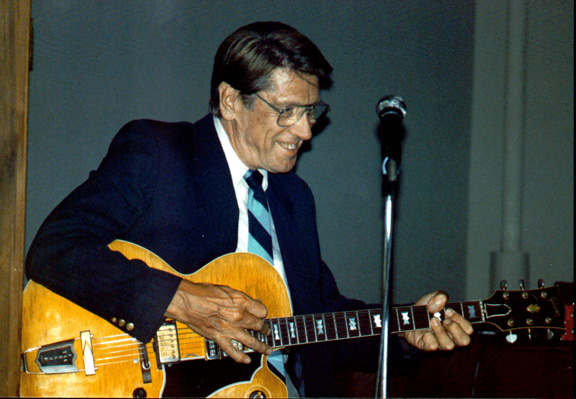
Turk Mauro
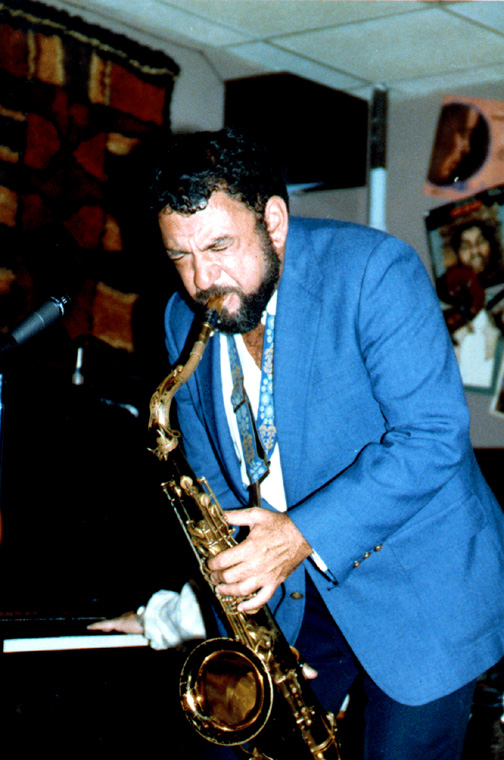
Controversial saxophonist Turk Mauro was born in New York City on June 11, 1944. Born to a family
of first-generation Italian-Americans, he first experienced jazz when his father, Dominick Turso, performed with local swing bands in his neighborhood. Mauro (real name: Mauro Turso) would follow his father around at gigs, idolizing Louis Armstrong and other jazz musicians of the time. He began to play the
alto saxophone at 14, joining the musician's union only one year later. He would hang around restaurants that his favorite
musicians were known to hang out in, eventually meeting his mentor, trumpet player Henry Allen. Allen started getting Mauro gigs around the city until he graduated from high school
in 1962. Mauro began work in a bank mailroom, but he could not leave music
for long and eventually started playing in jazz bands again. He married in 1965, but his relationship with his wife was strained
by a life on the road and two children he was not around to take care of. He lost touch with his daughters after the marriage
fell apart in the mid-'70s, but he continued to tour and play. He met Billy Mitchell, a member of Dizzy Gillespie's band, while playing in a club one night. That chance meeting
led to a few performances with Gillespie himself, and eventually a permanent spot with Buddy Rich's band. His reputation as a perfectionist made him a popular
sideman in the New York area, and he managed to release a debut album in 1977, The Underdog. This scored him a job at the Blue Note club in New York
City, but his second album (The Heavyweight) was a flop, beginning a dry period through the '80s. He
eventually had to start looking for odd jobs, driving taxis and limos and completely abandoning the jazz world. No less of
an authority than Sonny Rollins ran into Mauro in 1987 and suggested that the depressed musician try his
luck in Paris. Mauro dropped everything and booked the first flight to France.
He started to find regular work there in the clubs and venues as a sideman, and after nearly dropping out of the music scene
he was in demand again. His success in Paris led to a beautiful apartment in the city, as well as the chance to bring his
brother and father to France to see him play and perform with him. He also had a self-described lucky streak during this period
where he met his second wife and even found money on the street more than once. His marriage did not last long however, and
by 1991 he began another dry period. Work dried up in Paris when a recession hit, and despite hanging around for a few years
in the hopes that the scene would be revived, he eventually moved to Florida with a brand-new wife in 1994. He took care of
his sick father (his mother had died in 1990) and managed to play at the few jazz clubs in South Florida at the time. He also
began to gamble, spending ridiculous amounts of money trying to gain back the money he had been making in Paris. On top of
that, his wife was furious that this habit had developed, driving a wedge between them that would never mend. He began having
health problems of his own in 1999, spending time in the hospital for an inflamed colon that would eventually burst. All of
these problems came to a head in November of that year when he punched a local singer named Beverly Barkley after she complained of his smoking habits earlier in the
night. The two had performed together before, and had never gotten along, but the attack was unprovoked and he had to be stopped
from hitting her with a chair after she fell to the floor. A Fort Lauderdale police officer who was working the door arrested
him and she drew up a lawsuit. Among her claims was that he was spitting racial slurs at her, something that became quite
an issue in the case as he admited to everything but that aspect. The accusations stopped his music career dead in its tracks,
and his wife left him soon after he was released from jail. He moved in with his father to take care of him, but his father
passed away in early 2000. Mauro was convicted of battery and disorderly conduct, which left
him with a one-year probation and 50 hours of community service. In 2001, he still had not yet gone to trial for the incident
with Barkley, but he has managed to get occasional gigs as a musician
around the Florida area.
|

|

|

